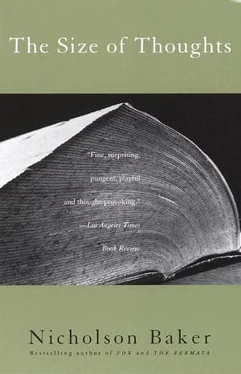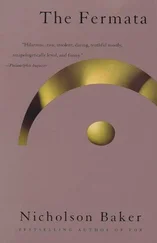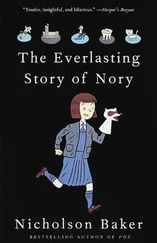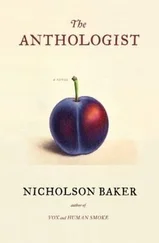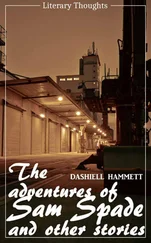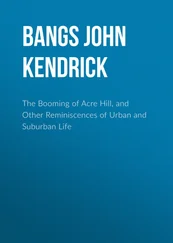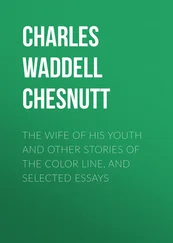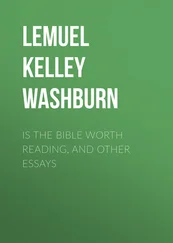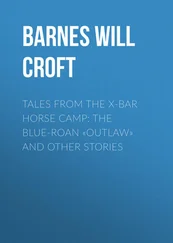Nicholson Baker - The Size of Thoughts - Essays and Other Lumber
Здесь есть возможность читать онлайн «Nicholson Baker - The Size of Thoughts - Essays and Other Lumber» весь текст электронной книги совершенно бесплатно (целиком полную версию без сокращений). В некоторых случаях можно слушать аудио, скачать через торрент в формате fb2 и присутствует краткое содержание. Год выпуска: 1997, Издательство: Vintage, Жанр: Публицистика, Критика, на английском языке. Описание произведения, (предисловие) а так же отзывы посетителей доступны на портале библиотеки ЛибКат.
- Название:The Size of Thoughts: Essays and Other Lumber
- Автор:
- Издательство:Vintage
- Жанр:
- Год:1997
- ISBN:нет данных
- Рейтинг книги:4 / 5. Голосов: 1
-
Избранное:Добавить в избранное
- Отзывы:
-
Ваша оценка:
- 80
- 1
- 2
- 3
- 4
- 5
The Size of Thoughts: Essays and Other Lumber: краткое содержание, описание и аннотация
Предлагаем к чтению аннотацию, описание, краткое содержание или предисловие (зависит от того, что написал сам автор книги «The Size of Thoughts: Essays and Other Lumber»). Если вы не нашли необходимую информацию о книге — напишите в комментариях, мы постараемся отыскать её.
The Size of Thoughts: Essays and Other Lumber — читать онлайн бесплатно полную книгу (весь текст) целиком
Ниже представлен текст книги, разбитый по страницам. Система сохранения места последней прочитанной страницы, позволяет с удобством читать онлайн бесплатно книгу «The Size of Thoughts: Essays and Other Lumber», без необходимости каждый раз заново искать на чём Вы остановились. Поставьте закладку, и сможете в любой момент перейти на страницу, на которой закончили чтение.
Интервал:
Закладка:
This appeal seemed to produce some effect, for two of the fellows began to look here and there among the lumber [the bushes of broom?], but half-heartedly, I thought, and with half an eye to their own danger all the time, while the rest stood irresolute on the road.
Interesting that Henley, a forgotten poet of the meerschaum pipe, is thesaurized by Stevenson as Silver, the unforgettable pirate of the maritime poop. “You have your hands on thousands, you fools,” Blind Pew tells the men poking around the bushy lumber for the map. “You’d be as rich as kings if you could find it, and you know it’s here, and you stand there malingering.” And earlier: “Oh, shiver my soul,” he laments, “if I had eyes!”
But only the poets and storytellers have eyes. Even Macaulay isn’t quite up to par, according to Saintsbury’s History of Nineteenth Century Literature (1896–1910): “A poet of the very highest class Macaulay was not; his way of thought was too positive, too clear, too destitute either of mystery or of dream, to command or to impart the true poetical mirage, to ‘make the common as if it were not common.’ ” 16James Russell Lowell similarly qualifies his praise for Dryden:
But if he [Dryden] have not the potent alchemy that transmutes the lead of our commonplace associations into gold, as Shakespeare knows how to do so easily, yet his sense is always up to the sterling standard.
Christina Rossetti entitled an entire book Commonplace, and Other Short Stories (1870). One of the stories is an account of a lost masterpiece by Titian — a landscape with a female nude and some grapes — that is overpainted with a crude image of a flaming dragon by one of Titian’s envious and less talented friends. The story ends:
Reader, should you chance to discern over wayside inn or metropolitan hotel a dragon pendent, or should you find such an effigy amid the lumber of a broker’s shop, whether it be red, green, or piebald, demand it importunately, pay for it liberally, and in the privacy of home scrub it. It
may
be that from behind the dragon will emerge a fair one, fairer than Andromeda, and that to you will appertain the honour of yet further exalting Titian’s greatness in the eyes of a world.
The superficial exoticism of the dragon hides the long-limbed lumber-luster of the naked and fruitful commonplace.
“Make It New,” Pound’s manifestoid call, and “Make It Strange,” the Formalists’ onion-dome of a translation, is thus shorthand for a hundred years of poetical and critical orthodoxy. By 1914, Saki had stocked a six-page short story with the esthetic theory. In “The Lumber-Room” (collected in Beasts and Super-Beasts ), young Nicholas announces that there is a frog in his breakfast. His elders scold him for thinking such a thing. As it happens, however, there is a frog in Nicholas’s breakfast — his meal being a predecessor of Marianne Moore’s horticultural definition of poetry, an imaginary breakfast with a real frog in it. (Nicholas has put the animal there himself.) As punishment, he is kept from visiting the beach with his vile cousins; and, watched over instead by his antipathetic aunt, he is forbidden to visit the gooseberry garden. So Nicholas decides to visit the lumber-room instead:
The key turned stiffly in the lock, but it turned. The door opened, and Nicholas was in an unknown land, compared with which the gooseberry garden was a stale delight, a mere material pleasure.
In keeping with the general features of dark rooms of the Human Understanding, it is “large and dimly lit, one high window opening on to the forbidden garden being its only source of illumination.” Like Saint Augustine’s memory, it is a “storehouse of unimagined treasures.” There is a piece of framed tapestry with a wolvish hunting scene, a roll of Indian hangings, some twisted candlesticks in the shape of snakes, a duck-shaped teapot, brass figures of peacocks and bulls, and, of course, a book: a “large square book” containing pictures of birds. (“And such birds!” A catalog of bird-wonders follows.) Just as Nicholas is “assigning a life-history” to the mandarin duck, his bad aunt calls accusingly from the gooseberry garden, and our hero is quietly pleased:
It was probably the first time for twenty years that any one had smiled in that lumber-room.
Naturally the other children turn out to have a crummy time at the beach, while Nicholas, deprived of two layers of purported treats (beach and garden), meditates happily on possible plot-twists for the dusty hunting tapestry, having suddenly come into a fabulous inheritance in the nineteenth-century lumber-room of fiction. We are left with the expectation that Nicholas will grow up to write quick, cruel, funny stories about nasty grownups and sharp-toothed beasts, as his creator had.
Mervyn Peake changes the sex of his fifteen-year-old visitor to the fictional lumber-room in his Titus Groan of 1946, but Fuschia’s hiding place is very similar to Nicholas’s:
The fact that this room was filled with lumber did not mean that she ignored it and used it only as a place of transit. Oh no, for it was here that many long afternoons had been spent as she crawled deep into the recesses and found for herself many a strange cavern among the incongruous relics of the past. (p. 60.)
Mervyn Peake, since he must as a writer go beyond Saki, posits for Fuschia two even more secret areas beyond the lumber-room — the acting room, and the secret attic. Fuschia describes the tripartite house of fiction to herself:
I know where I go. I go here. This is where I go. Up the stairs and into my lumber room. Through my lumber room and into my acting room. All across my acting room and up the ladder and on to my verandah. Through the door and into my secret attic. And here it is I am. I am here now. I have been here lots of times but that is in the past. That is over, but now I’m here it’s in the present. This is the present. I’m looking on the roofs of the present and I’m leaning on the present window-sill and later on when I’m older I will lean on this window-sill again. Over and over again. (p. 62.)
So useful and welcome does the curiosity-shop model of literary activity become that by 1961, Muriel Spark could confidently assume, when she had a character in her book The Prime of Miss Jean Brodie write a treatise called “The Transfiguration of the Commonplace,” that we would know pretty much what she was getting at. The commonplace was the entire arbitrarily window-framed world, the world of moral clichés, the world of cardboard-character types, the world of material junk, so familiar it was rejected and put in storage, and the transfigurer was the connoisseur-pawnbroker-auctioneer who saw where he or she might tie a dangly handwritten price on a little white string, assigning value and ownership where there had before been only oppressiveness and shopworn confusion.
Arthur Danto, a philosopher at Columbia, “admired and coveted” Muriel Spark’s title, and, having evidently secured her permission (as he tells us in his Introduction), he used it as the title of his own book, The Transfiguration of the Commonplace: A Philosophy of Art (1981), a “takeover” (Danto’s word) that, whatever the merits of his book, may not sit quite right with some observers, since Spark was obliged to give her gracious consent regardless of whatever private misgivings she might have felt in seeing a professional esthetician detach her quiet invention from the warmth and privacy of its living chapter and plaster it all over a study (mainly) of the smirking, loveless twentieth-century “transfigurations” of Duchamp and Warhol and their camp-followers — handlebar mustaches on the Mona Lisa, fake Brillo boxes, etc. Danto devotes a paragraph to Hamlet , passingly mentions Proust’s long sentences and Hemingway’s short ones, and alludes to “Johnsonian symmetries” and “Shakespearean fustian” (p. 197), but he says nothing about Wordsworth or Coleridge or Tennyson; his coverage of the textbook pop-art Modernists is not at all the sort of Transfiguration that Muriel Spark’s Tennyson-reciting Sister Helena of the Transfiguration, or Miss Brodie herself, would have wanted anything to do with in their prime.
Читать дальшеИнтервал:
Закладка:
Похожие книги на «The Size of Thoughts: Essays and Other Lumber»
Представляем Вашему вниманию похожие книги на «The Size of Thoughts: Essays and Other Lumber» списком для выбора. Мы отобрали схожую по названию и смыслу литературу в надежде предоставить читателям больше вариантов отыскать новые, интересные, ещё непрочитанные произведения.
Обсуждение, отзывы о книге «The Size of Thoughts: Essays and Other Lumber» и просто собственные мнения читателей. Оставьте ваши комментарии, напишите, что Вы думаете о произведении, его смысле или главных героях. Укажите что конкретно понравилось, а что нет, и почему Вы так считаете.
